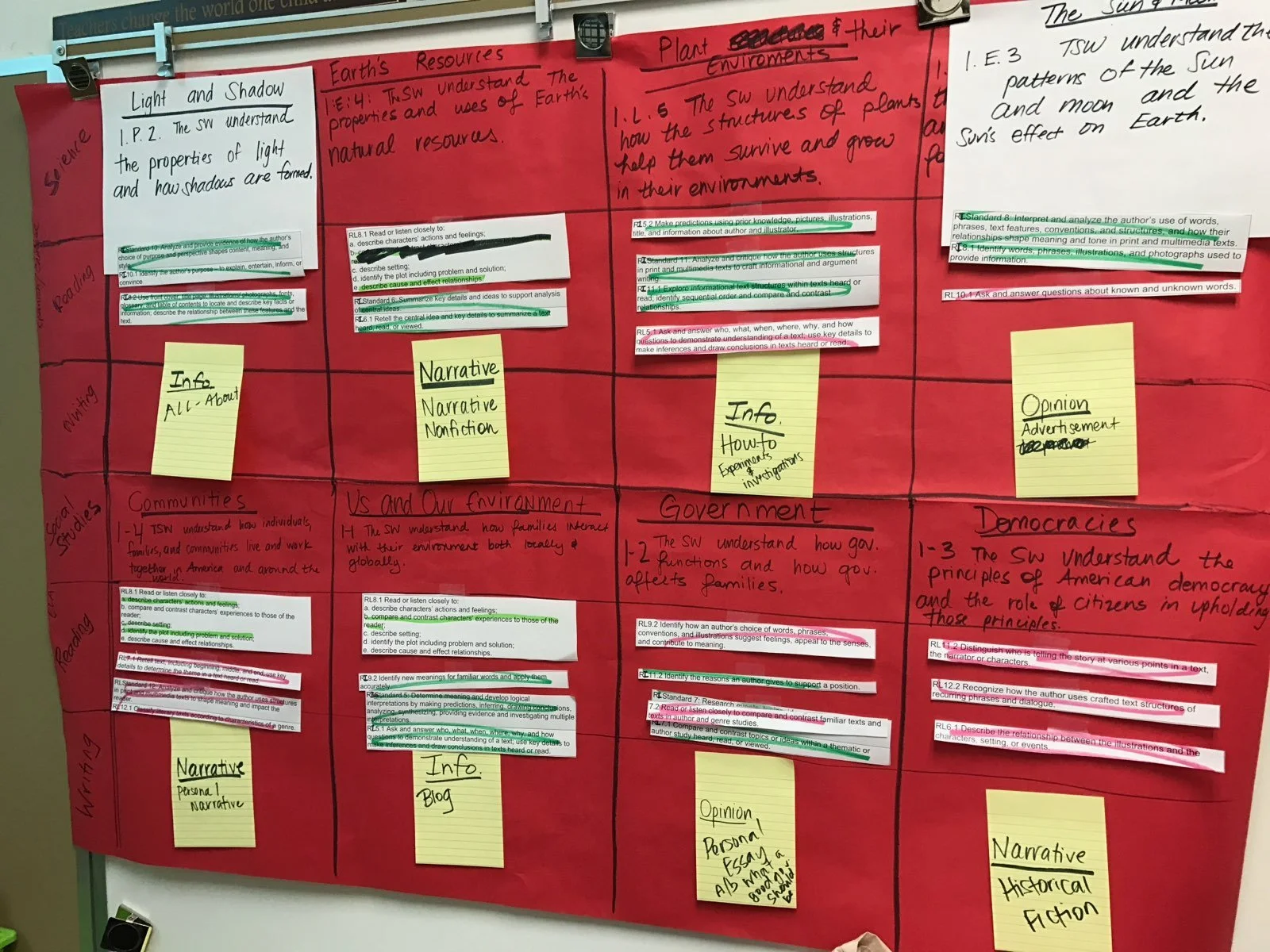Language Immersion Curriculum Map (2018-2019)
Role: Program Coordinator and Curriculum Designer
The Challenge
Our language immersion program was expanding rapidly — launched in 2016 with Pre-K and Kindergarten, it grew by one grade level each year. By the 2018–2019 school year, we added 3rd grade, our first state testing grade. At the same time, South Carolina updated its literacy standards, requiring a complete curriculum realignment, and our school adopted Project-Based Learning through PBLWorks as a new instructional framework.
While teachers were doing exceptional work within their own classrooms, the combination of program growth, new standards, and the dual-language structure created inconsistencies across grades and languages. We needed a shared framework that connected standards, pacing, and language goals across Spanish and Chinese tracks — while embedding the principles of Project-Based Learning.
The Process
To align the growing program, I led collaborative planning sessions with teachers across grade levels and both language tracks. We began by unpacking the new South Carolina literacy standards and mapping how they connected to immersion language goals in Spanish and Chinese.
Working within the PBLWorks framework, we identified key projects and performance tasks that could drive authentic, cross-disciplinary learning. I developed shared planning templates in Google Sheets to help teachers align pacing, projects, and assessments, and created color-coded systems to visualize overlaps and gaps.
Throughout the process, I gathered teacher feedback through working sessions and informal check-ins, refining the map for clarity and usability. By the end of the cycle, we had a cohesive, adaptable framework that supported both vertical alignment and language-specific differentiation.
First grade curriculum mapping that aligns Science and Social Studies with Language Arts.
The Outcome
The new curriculum map provided a unified framework that supported alignment across grade levels, language tracks, and instructional models. Teachers were able to plan collaboratively using consistent pacing and shared project structures while maintaining flexibility for language-specific goals. The framework also served as an onboarding guide for new staff and a foundation for professional development conversations throughout the year.
By integrating PBLWorks’ project-based approach with dual-language immersion and updated literacy standards, the program achieved greater instructional consistency and clearer connections between learning objectives, assessments, and student experiences.
A section of the google doc finalized curriculum map that integrates all three languages across all subject areas.
Reflection
This project reinforced the importance of designing with people, not for them. Building the map collaboratively helped teachers take ownership of the system, which led to stronger engagement and smoother implementation. It also deepened my understanding of how thoughtful design — supported by clear systems — can make complex programs feel manageable and meaningful for everyone involved.

